SPBE, SPBE-D and SPBE-K self-aiming combat elements
As of the beginning of the eighties of the last century, at the disposal of the Soviet military aviation there were several types of ammunition suitable for destroying enemy armored vehicles. Such problems could be solved with the help of guided and unguided missiles or bombs, as well as with the use of aircraft guns. Moreover, all such tools could show limited effectiveness in a real environment. To increase the anti-tank potential of aviation, the development of a new project of a special autonomous weapons system was launched.
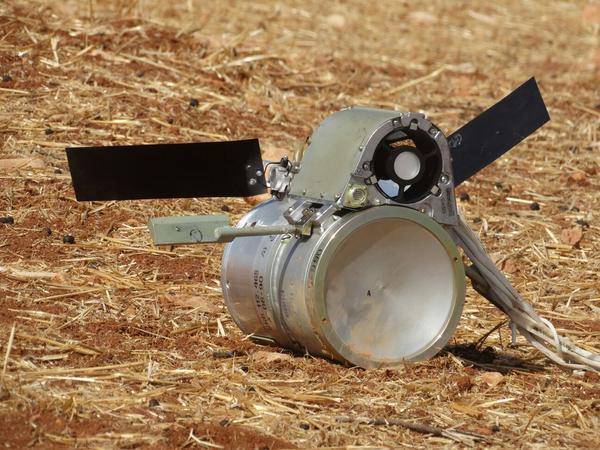
The combat element of the SPBE, which did not get the target. Photo Imp-navigator.livejournal.com
Not later than the mid-eighties, the Bazalt Research and Production Association (Krasnoarmeisk, Moscow Region) began the development of an anti-tank system using completely new principles of operation. It was proposed to create a relatively light and compact ammunition that can independently search for and hit enemy combat vehicles. Such a product could be used both with aerial bomb cassettes, and as part of other shock weapons.
According to reports, initially the new project was designated as PTAB-SP - “Anti-tank aerial bomb self-targeting”. The cipher "Motive-3" was also used. Subsequently, the project changed its name to a modern one, under which it later became widely known. Now the product is called SPBE - "Self-targeting combat element." Later modifications retained such a designation, but it was supplemented with the letters “D” and “K”.
Within the framework of the SPBE project, two types of devices with different purposes were created. The composition of the complex "Motive-3" includes the actual combat elements and command element. The task of the latter is to track some parameters and form radio commands for combat elements. The need to use a separate command element was associated with the large size of the required hardware. Subsequently, the necessary sensors were reduced, so that the upgraded elements of the SPBE-D became completely autonomous and no longer need third-party commands.
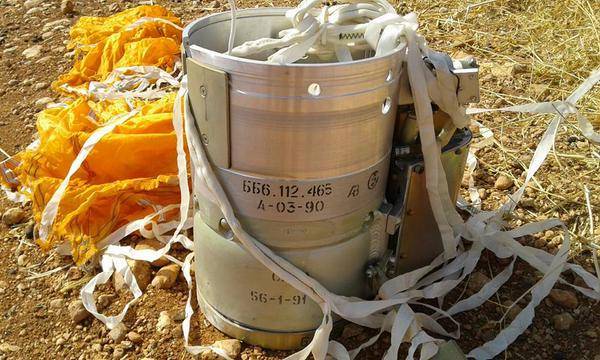
SPBE with released parachute. Photo Imp-navigator.livejournal.com
The command and combat elements of the SPBE system of the basic modification, despite serious differences, are maximally unified. They have the same body, consisting of two elements. Part of the device is placed inside the cylindrical body, on board of which a curved casing with other devices is fixed. On the upper lid of the element is fixed several folding plates-stabilizers. According to reports, the elements of the two types are distinguished by their internal equipment, which is associated with their roles during combat work.
For combat and command elements, the upper part of the cylindrical body contains a compartment for two parachutes. At different stages of work, SPBE uses an auxiliary and main parachute, which differ in size. Parachutes are controlled by commands from electrical systems using squibs and rod mechanisms.
About two thirds of the body of the combat element is a shaped charge, designed to destroy an armored target. The item carries an 4,5 kg explosive. The lower cut of this charge is made in the form of a cumulative funnel and has a copper lining, which improves combat performance. Lining also performs the functions of the lower case cover, protecting the explosive from external influences. The existing shaped charge during blasting forms a jet consisting of hot gases and molten metal. This jet develops a high speed and is capable of penetrating up to 70 mm of homogeneous armor at a meeting angle of 30 ° at standard operating distances.
The command element of the “Motive-3” system has no warhead. Instead, in a cylindrical housing fits so-called. radiometric sensor. Using a compact radio altimeter element is able to determine the distance to the ground. This information is used by automation in the management of combat elements. The data from the altimeter goes to the instruments placed in the side container. At a certain point in time, having received the required data, the command element equipment broadcasts necessary commands over the radio to the combat elements.
The equipment of the onboard container of the combat element is more complex. Inside the curved casing is placed the receiver of infrared radiation, used as a means to search for targets. The light-sensitive elements of such an opto-electronic device are placed in the hole in the bottom of the casing. According to known data, the receiver is capable of operating in the 3-5 μm and 8-14 μm wavelength ranges, which allows it to find the thermal radiation characteristic of combat vehicles. The field of view of the optics is a cone 45 width of angular minutes. Small field sizes are compensated by the original way of conducting observation.
For certain reasons related to the method of application, the combat and command element received the same size and did not differ in mass. Each of the elements of the SPBE complex in the transport position has a height of 270 mm. The diameter of the cylindrical body of the warhead or radio altimeter - 186 mm. The cross-sectional size, taking into account the instrument compartment casing, is 290 mm. The mass of the combatant element - 16 kg.
The SPBE Motive-3 self-targeting combat elements can be used with different carrier platforms. One of the main means of their transportation and delivery to the target are one-time bomb cassettes of various types. Items can be fitted in cassettes RBC-250 or RBC-500. In the case of the latter, 2,5 combat elements and 450 command elements fit into the hull of length 14 m and diameter 1 mm. A bomb cassette with such a load weighs 478 kg and can be used by various planes capable of carrying and using unguided bombs.
Not so long ago, another version of the bomb cassette appeared. While maintaining the main features of the existing product, the PBK-500U cassette differs from it in the presence of its own controls. Thanks to this, before dropping 15 submunitions, the bomb can fly up to 50 km.
Over time, the 9М55К1 rocket projectile, designed for the Smerch multiple launch rocket system, became another platform for combat elements. The cassette warhead of such a projectile has five cells for combat elements. According to some data, it uses modernized products SPBE-D, which do not require a separate command element. Among other things, this allows a noticeable increase in the number of combat elements and increase the probability of hitting targets.
Unusual anti-tank ammunition of the SPBE family have a corresponding operating principle of great interest. After a reset or launch, a one-time bomb cassette or missile delivers several combat elements to the target area. Next is the disclosure of the body with the release of elements. The discharge is carried out at heights of at least several hundred meters. Immediately after being ejected from the cassette, the oncoming flow of air pulls auxiliary parachutes designed to reduce the speed of the fall of products. Having the same size and weight, hulls and parachutes, command and combat elements are reduced at the same speed.
When the height of the 170 m is reached, the command element, equipped with a radio altimeter, gives the command to shoot auxiliary parachutes and deploy the main parachutes. After that, the command element is turned off from work, and all further tasks are solved only by combat. The main parachute lines are attached to the body of the warhead, which is why the asymmetrical warhead slopes 30 ° towards the instrument compartment cover when descending. He maintains such a position up to the triggering of a warhead or falling to the ground.
The descent of the combat element occurs at a steady speed 15 m / s. Due to the available stabilizers, the element rotates around a vertical axis at a speed of about 6-8 revolutions per second. The correct combination of descent speed, rotational speed, width of field of view and tilt of the combat element leads to the fact that during descent the optoelectronic system gradually “inspects” a circle with a radius of about 90-100 m. The field of view of the infrared system moves along a narrowing helix, and at each moment of time there is a plot of terrain with a diameter (depending on the height of the combat element) no more than 1,5-2 m
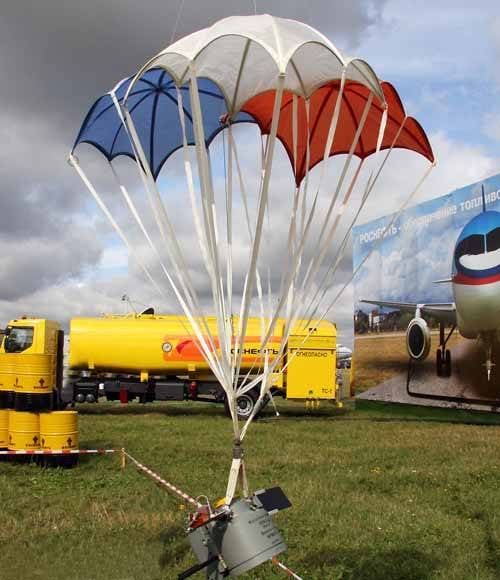
Product SPBE-D in the configuration of descent and search for a target. Photo Zonwar.ru
Upon detection of thermal radiation characteristic of armored combat vehicles, the opto-electronic device gives the command to undermine the warhead. The explosion of a molded charge leads to the formation of a cumulative jet consisting of gases and molten copper. The jet energy is sufficient to penetrate 70 mm of homogeneous armor.
If during descent the combat element could not find the target, then it simply falls to the ground. According to some reports, after that the infrared system continues to monitor the terrain and searches for targets with a characteristic thermal signature. In this mode, the self-targeting combat element turns out to be a kind of land anti-tank mine. Work in this mode continues until the development of the battery charge. After that, the product is turned off.
According to known data, combat elements SPBE "Motif-3" were adopted in the late eighties. Initially it weapon intended only for aviation, and should have been used with disposable bomb cassettes. The cassette with combat elements receives the designation by type RBC-500 SPBE.
A few years later an improved version of the SPBE was created. The project SPBE-D "Motive 3M" provided for some restructuring of the combat element, which allowed to abandon a separate command device. In the case of the SPBE-D, the element simultaneously carries both the warhead and the radio altimeter with the required parameters. In this case, a cylindrical body with an additional side cover was retained. SPBE-D for aviation was adopted before the beginning of the nineties and was proposed for use with existing bomb cassettes. Due to the abandonment of the 500-kg command element, the cassette now contained 15 combat equipment.
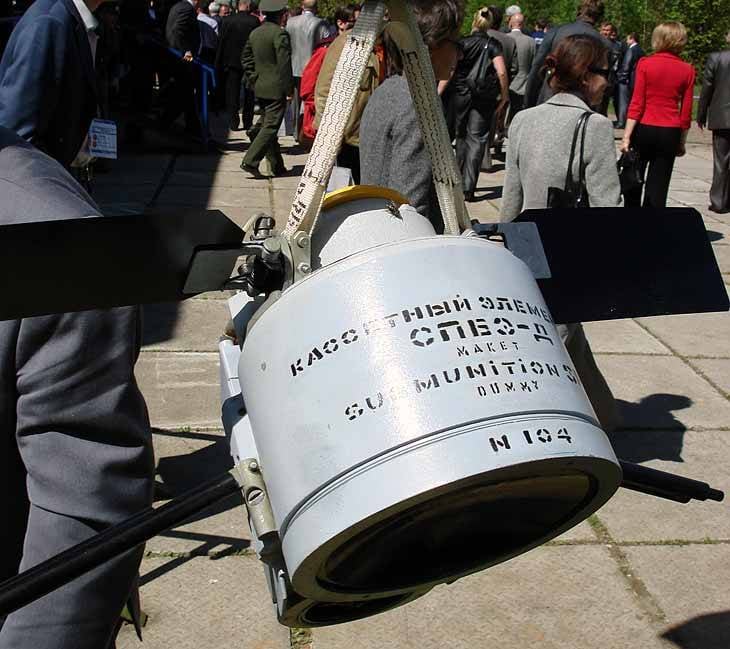
Combat element close-up. Photo Zonwar.ru
In 1996, the 9М55К1 rocket projectile for the Smerch MLRS was adopted by the ground forces. Each such projectile carries five self-aiming combat elements of the “D” version that do not need commands from the side. The characteristics of the projectile propulsion system make it possible to deliver combat elements to the range from 20 to 70 km.
In 2016, NPO Basalt presented a new development that develops the ideas of existing projects. At the Army-2016 forum, the planning bomb PBC-500U “Drill” was shown, equipped with combat elements SPBE-K. The cassette with a special aerodynamic appearance, using satellite and inertial navigation, is able to plan for a distance of 50 km and deliver combat elements to the 15 target area.
A deeply modernized element called SPBE-K is distinguished by a slightly increased size and a different shape of the body. The cylindrical body of the parachute compartment and the fighting compartment now have greater elongation, and the instrument compartment has an increased height. Probably, all these improvements are directly related to the use of a combined target search system. In addition to an infrared opto-electronic device for the detection of armored vehicles, a radar system is now used. The latter has the function of identifying the state affiliation of a ground object.
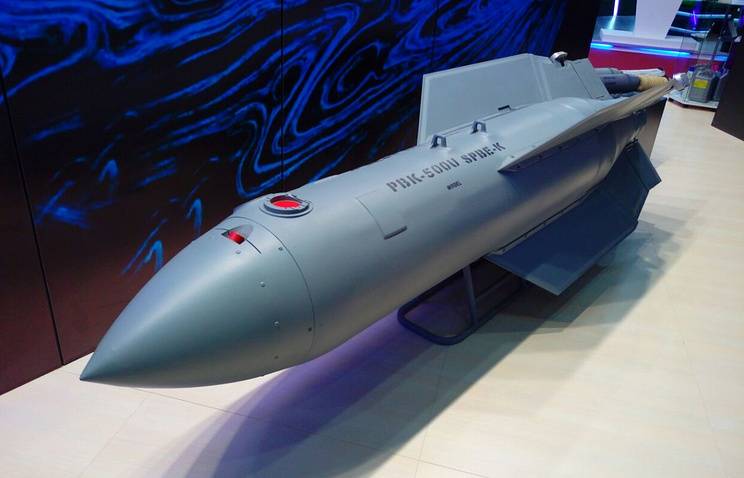
Planning bomb cassette PBK-500U "Drill". Photo Vitalykuzmin.net
As far as is known, until recently the self-aiming combat elements of the SPBE family were not used in real operations. They appeared too late to get to the war in Afghanistan, and the terrorist organizations in Chechnya did not have enough armored vehicles. Nevertheless, the original weapon was still able to be tested in practice. In October, 2015 of the year - just a few days after the start of the operation of the Aerospace Forces in Syria - it became known that the RBC-500 SPBE cassettes were included in the ammunition pack of the Russian bombers.
There are reports of several cases of the use of such weapons against clusters of equipment and manpower of terrorist organizations. In all cases, it was about the successful defeat of several armored combat vehicles. At the same time, part of the combat elements, not finding targets, fell to the ground. Photographs of SPBE products lying on the ground appeared in various sources, but for some reason the pictures of the burned armored vehicles were not published. Probably in this way the opponent was trying to keep a good face on an extremely bad game.
It is known that the systems of several models of the “Motive-3” family are produced serially and are supplied to the Russian armed forces, which use them together with a number of delivery vehicles. NPO Basalt regularly displays its developments at various military-technical exhibitions, but export orders for SPBE, as far as we know, are absent. The existing international agreements played a significant role in this development. In 2008, more than a hundred states — curiously, mostly without developed defense industries and their own production of modern systems — signed the Convention on Cluster Munitions. As a result, the international market for such weapons, regardless of their purpose, has declined sharply.
Defeat task tank or other armored vehicles from the upper hemisphere can be solved in different ways. The Motiv-3 self-aiming combat elements projects created by the experts of the Bazalt NPO offer and implement not the most difficult variant of armored vehicles attack, but at the same time they have a number of characteristic advantages. Combat elements can be used by aviation and rocket artillery to deliver effective strikes against accumulations of equipment. At the same time, the probability of a successful defeat is high enough, which was confirmed both in tests and in the course of a real conflict.
On the materials of the sites:
http://airwar.ru/
http://russianarms.ru/
http://dogswar.ru/
http://zonwar.ru/
http://sovetarmy.2x2forum.com/
http://forums.airbase.ru/
https://imp-navigator.livejournal.com/
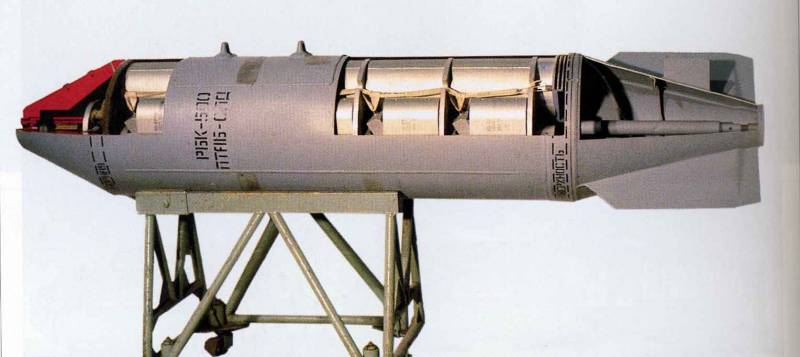
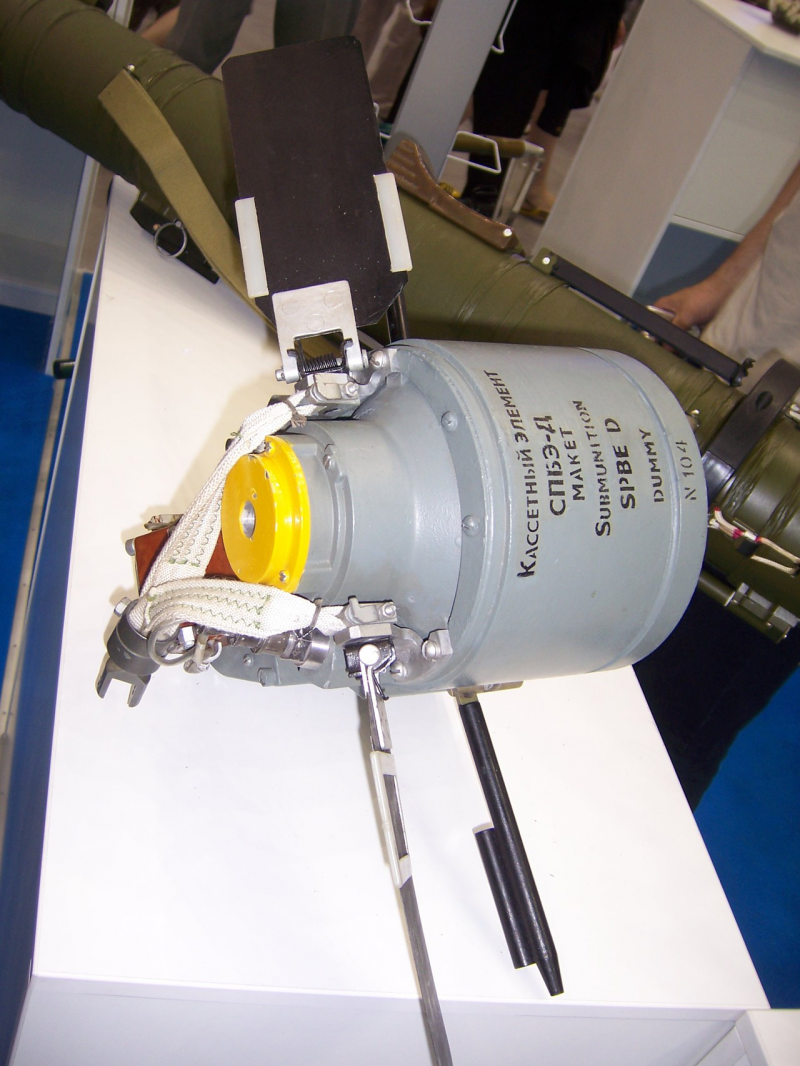
Information